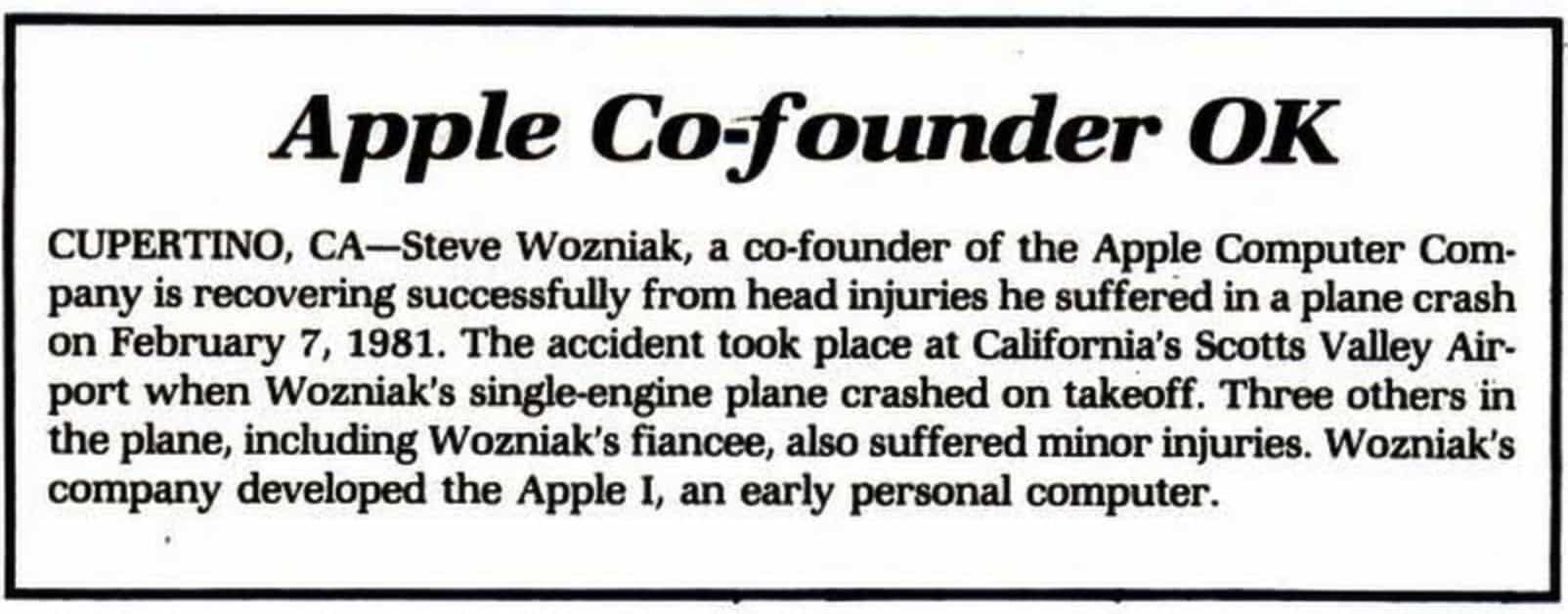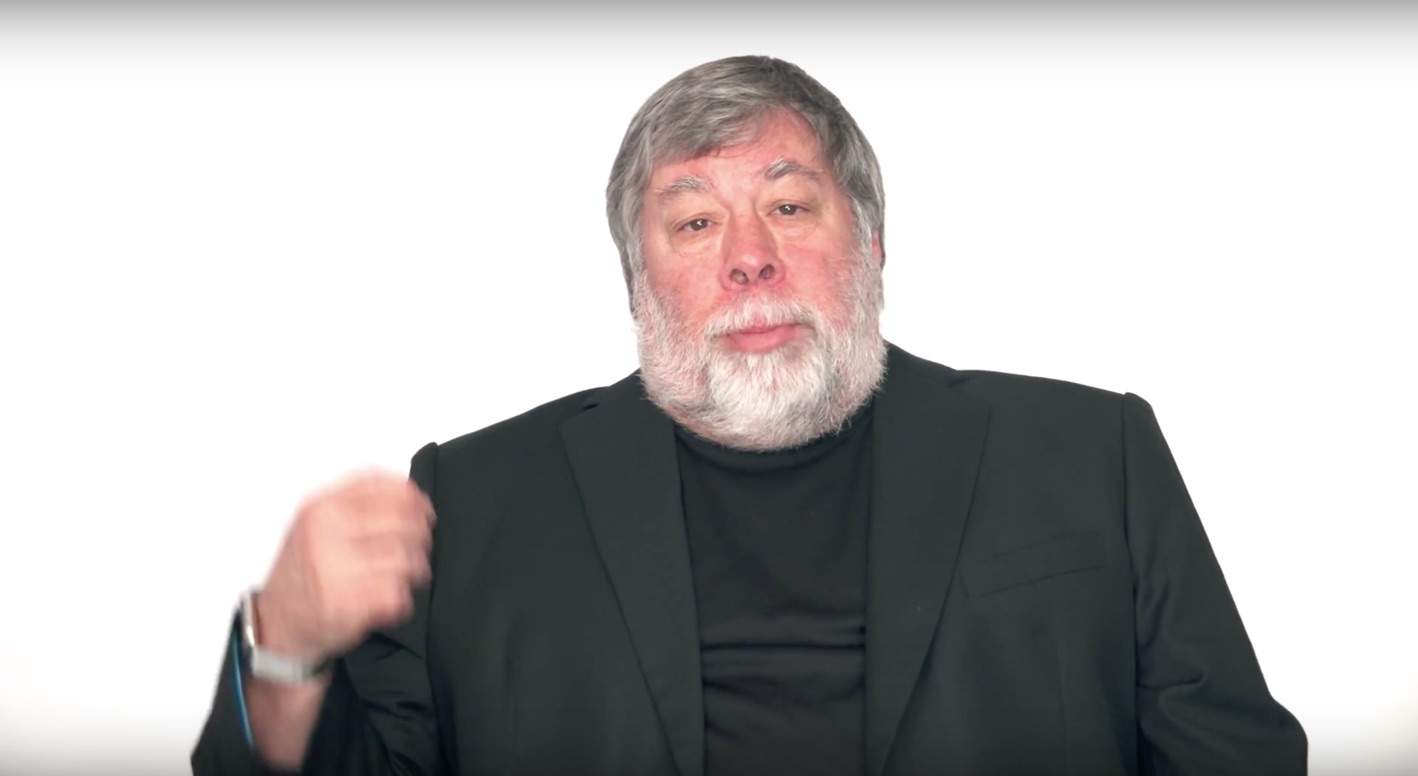 February 7, 1981: Apple co-founder Steve Wozniak is involved in a serious plane crash in California, resulting in his first lengthy leave of absence from the company.
February 7, 1981: Apple co-founder Steve Wozniak is involved in a serious plane crash in California, resulting in his first lengthy leave of absence from the company.
At the time, Wozniak is flying a turbocharged, single-engine, six-seat Beechcraft Bonanza A36TC. In the plane with Woz is his fiancé, Candi Clark, her brother and her brother’s girlfriend. Fortunately, nobody dies in the crash, although Woz suffers minor head injuries.
Steve Wozniak plane crash
Coming just months after Apple’s IPO, in which Wozniak’s stake in Apple earned him $116 million, the crash occurred during a time of extreme change in Woz’s life. He was watching Apple grow bigger than he’d ever imagined — and change in ways he wasn’t completely happy about.
In terms of his personal life, he had just divorced his first wife. Woz then started dating Clark, a secretary at Apple. For their first date, he took her to see a science fiction movie at a theater he bought with some of his IPO money.
The pair quickly planned to get married. Wozniak decided to fly them to see Clark’s uncle, who offered to design her a custom wedding ring.
With Woz at the controls, the plane climbed too abruptly during takeoff from Santa Cruz Skypark, a small airport in Scotts Valley, California. Then the aircraft stalled and careened through two fences into a nearby skating rink’s parking lot. Woz, who had only flown for 50 hours at the time, later said he thought Clark might have accidentally leaned on the controls.
A turning point for Woz at Apple
After Wozniak’s plane crash, he wound up in the hospital, suffering from amnesia. He spent much of his recovery time playing video games and convincing his old Homebrew Computer Club friend, Dan Sokol, to smuggle in pizza and milkshakes. He didn’t immediately go back to Apple.
This turned out to be the beginning of Woz extricating himself from his full-time role at Apple. Although he technically remains an Apple employee to this day, he began pursuing other interests.
When he wound up going back to Apple a few years later, he stayed for just two more years — growing increasingly frustrated by the lack of focus placed on the Apple II division — before leaving again.

Photo: InfoWorld


